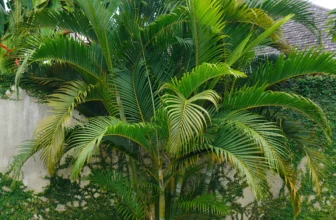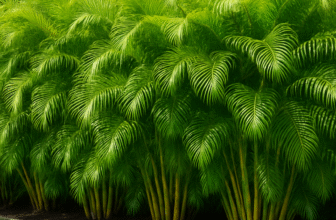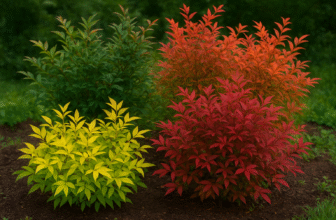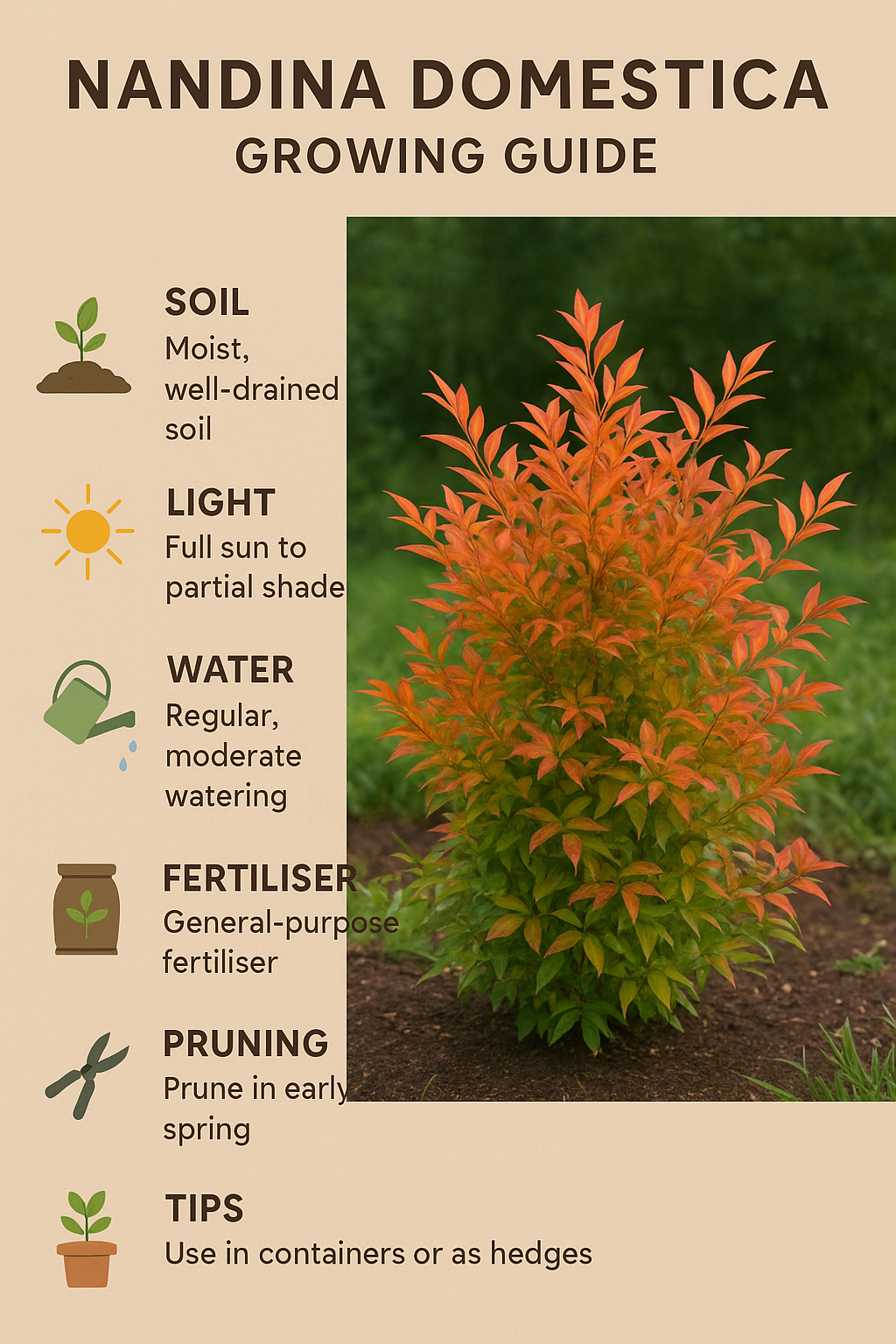Heliconias, with their striking lobster-claw flowers and lush green leaves, add instant tropical charm to gardens. In Australia, they thrive from Darwin’s tropics to sheltered Sydney coasts and even cooler Melbourne. This 2025 guide covers the best Heliconia varieties and easy tips for year-round success..
Why grow Heliconias in Australia?
Heliconias add tropical beauty with lush leaves and bright bracts, attracting birds, bees, and butterflies. With many varieties, pick the right one for your climate and enjoy year-round colour in your garden. Wisconsin HorticultureBamboo Land
How to match heliconia varieties to Australian climates
Before we list varieties, understand the climate rules:
- True tropical heliconias thrive in warm, frost-free areas (Northern Australia and much of Queensland). In these zones many species will be evergreen and flower repeatedly. gardeningsolutions.ifas.ufl.edu
- Subtropical coastal areas (e.g., Brisbane, northern NSW) can grow many heliconias with minimal protection. Choose varieties known to tolerate occasional cool snaps. Zacaconia Tropical GardensSunshine Coast Plants
- Temperate regions (Sydney, Melbourne, parts of southern WA and TAS) can still grow heliconias in sheltered microclimates or as container plants that are moved indoors in winter. Some “cold-tolerant” cultivars and smaller species will cope better in these zones if protected. elarishtropicalexotics.com
Pick varieties that match your zone and your garden’s exposure (sun vs shade), then follow the planting and care tips in this guide.
Best Heliconia varieties for Australian gardens (Tropics to Temperate)
Below are the top choices grouped by garden type and climate. For each variety, I include the look, ideal conditions, and why it’s great for Australian gardeners.
Tropical & Wet-Tropics winners (Darwin, Cairns, Far North QLD)
(Lobster Claw / Hanging Lobster Claw) Heliconia rostrata
- Look: Pendent, dramatic red/orange/yellow hanging bracts.
- Conditions: Warm, humid, full sun to part shade; spectacular in large tropical gardens.
- Why: Show-stopping focal plant and excellent for cutting. Works best where there’s no frost. The Spruce
Heliconia bihai / H. bihai hybrids (Red torch types)
- Look: Upright, torch-like bracts in red/orange.
- Conditions: Full sun to light shade, loves rich, moist soils.
- Why: Large, architectural forms for dramatic tropical borders. pacificfarmers.com
Heliconia psittacorum (Parrot Heliconia / Parrot’s Beak)
- Look: Fan-like or compact bracts in yellows, greens and reds.
- Conditions: Very adaptable, flowers often and can be semi-compact — suitable for smaller tropical spaces and pots.
- Why: Very popular as a garden and cut-flower variety. The Spruce
Subtropical / Coastal picks (Brisbane, Gold Coast, northern NSW)
Heliconia chartacea (Pink Heliconia / ‘Sexy Pink’ types)
- Look: Bright, clear pink bracts, long-lasting flowers.
- Conditions: Part sun to dappled shade, rich soil and regular water.
- Why: Excellent for subtropical gardens looking for a softer colour palette. plantgrouphawaii01
Heliconia stricta group (including dwarf cultivars: ‘Caribaea’, ‘Valentine’, etc.)
- Look: Upright or clumping; many colour forms and dwarf types.
- Conditions: Shade-tolerant and adaptable — suitable for mixed tropical borders.
- Why: Versatile for shaded garden corners and containers. The Florida Gardening Project
Hybrid cultivars like ‘Hot Rio Nites’ and ‘Pedro Ortiz’
- Look/variety: hybrids selected for larger bracts, improved flowering and vigour.
- Why: Many Australian growers favour modern hybrids for reliability and ornamental value. pacificfarmers.complantgrouphawaii01
Temperate & cool-climate options (Sydney, Melbourne, Adelaide, Hobart)
Growing heliconias in temperate Australia is possible with the right variety and microclimate. Choose sheltered, frost-free spots, plant near a north-facing wall, use heavy mulch, and consider containers so you can protect plants in winter.
Heliconia scheideana (one of the hardiest species)
- Look: Taller clumping habit with attractive bracts.
- Conditions: Fairly tolerant of cooler temperatures compared with many heliconias; grow in a protected, frost-free location.
- Why: Often recommended for cooler gardens, though it can take longer to flower. PalmTalk
Cold-hardy selections and small-sized varieties
- Look: Dwarf or compact forms, or specific cultivars labelled “cold-hardy.”
- Conditions: Plant in containers or sheltered garden beds with winter cover.
- Why: Microclimate management makes these the most realistic choice for temperate Australia. See Australian suppliers for current cold-hardy stock. elarishtropicalexotics.comBamboo Land
How to choose the right Heliconia variety for your garden (quick checklist)
- Know your climate zone (tropical, subtropical, temperate).
- Decide height and form: tall architectural, dwarf clumping, or pendant.
- Choose sun exposure: many heliocnias like full sun; some stricta types prefer shade.
- Think about space and root spread (rhizomes expand).
- Want cut flowers? Pick varieties known for long-lasting bracts (H. rostrata, H. psittacorum hybrids).
- Live in cooler climates? Choose cold-hardy species, plant near walls, or use containers. Bamboo LandYates
Planting and soil: set them up to thrive
Soil & drainage
Heliconias prefer rich, organic soil that drains well but holds moisture. Work generous compost or well-rotted manure into the planting hole. A deep bed of organic matter gives rhizomes a good start. Australian garden supplies and growers recommend well-drained, fertile mixes for the best flowering. Bamboo LandYates
Planting depth & spacing
Plant rhizomes shallowly with growth points facing up. Space large varieties 1–2 m apart; dwarf or clumping types can be closer (0.5–1 m). Consider mature height when placing plants — heliconias grow rapidly in the right climate.
Best time to plant in Australia
In subtropical and temperate zones, plant in spring when the soil warms. In true tropical zones, planting can be more flexible but avoid the wettest part of the year if your garden floods. Australian growers generally recommend planting when ground temperatures are rising to give plants a full growing season before any cooler months. Sunshine Coast PlantsYates
Watering, feeding and mulch — practical care
- Watering: Keep soil evenly moist during the growing season. In hot, dry spells, you’ll need more frequent watering. Avoid waterlogging.
- Feeding: Regular feeding with a balanced slow-release fertiliser or monthly liquid feeds during growth supports big leaves and brighter bracts. Organic compost and mulch feed the soil, too.
- Mulch: A thick layer of organic mulch keeps roots cool and moist and adds slow-release nutrients. Replace or top up annually.
These are standard, proven cultural practices recommended by nurseries and horticulture guides. Bamboo Landgardeningsolutions.ifas.ufl.edu
Light and shade — getting it right
- Full sun lovers: Many upright and torch types will flower best with good sun — ideally morning sun and some afternoon shade in hot interiors.
- Shade-tolerant types: Many stricta group varieties and some smaller species do well in partial or dappled shade.
- Leaf colour & light: Plants in deeper shade grow taller with larger leaves but may produce fewer flowers. Balance leaf display with flowering needs. The Florida Gardening ProjectBamboo Land
Container growing — an option for temperate gardeners.
Containers let you move heliconias indoors or under shelter when frost threatens. Use a large pot (at least 40–50 cm diameter for medium-sized varieties), rich potting mix, and keep drainage holes clear. Water more frequently than in beds and feed regularly. Dwarf cultivars and species like H. psittacorum variants are ideal for pot culture. The Florida Gardening Project
Protecting heliconias from cold and frost
If you garden in a climate with occasional frost:
- Plant in a sheltered microclimate (north-facing wall, courtyard, or under tree canopy).
- Mulch heavily and protect the crown with straw or horticultural fleece during cold snaps.
- Container strategy: lift pots and move them to protected spaces when frost is forecast.
- Accept that some varieties will die back to the rhizome and resprout in spring — this is normal for less hardy types. Australian growers recommend giving plants the longest possible frost-free season to establish. elarishtropicalexotics.comSunshine Coast Plants
Propagation: How to multiply your heliconias
- The easiest method is to divide rhizomes. Do this in spring when the plant is actively growing. Each division should have at least one growing shoot or eye and a healthy portion of rhizome.
- You can also grow from seed for some species, but seed-grown plants may take longer to flower and will vary from the parent plant.
Division is the most reliable route for keeping cultivar traits and getting flowering plants sooner. pacificfarmers.com
Common pests, diseases and troubleshooting
- Pests: Snails and slugs can chew young leaves. Scale and mealybugs may appear in protected, humid spots. Inspect new plants and treat infestations early.
- Diseases: Root rot can occur in waterlogged soils — plant in well-drained beds and avoid standing water. Foliar fungal issues can appear in humid, stagnant air; improve air circulation and remove affected leaves.
- Poor flowering: Often caused by lack of warmth, insufficient light, or inadequate nutrition. Make sure the variety chosen suits your climate and give it full growing-season warmth to set blooms. gardeningsolutions.ifas.ufl.eduBamboo Land
Design ideas: use heliconias for impact
- Tropical border: plant tall heliconias at the back, mid-height gingers and lower groundcovers in front.
- Feature clump: a single large clump of H. rostrata or H. bihai acts like a living sculpture.
- Mixed pots: combine a dwarf heliconia with a variegated ginger and trailing foliage for a lush patio pot.
- Poolside drama: large upright types near a pool create a resort feel — pick non-invasive types and manage irrigation.
Heliconias pair beautifully with cycads, gingers, cannas and lush tropical grasses for a layered look.
Where to buy heliconias in Australia (quick guidance)
Local nurseries, tropical plant specialists and online growers often sell bare rhizomes, tubestock and potted heliconias. Look for reputable sellers who describe the variety and provide care notes. Sellers such as specialised Australian nurseries and tropical plant retailers list variety information and cold-hardy selections — check stock and reviews before buying. Bamboo Landplantgrouphawaii01
Quick troubleshooting table
- Yellowing leaves but healthy new shoots → may be overwatering or poor drainage. Mulch and reduce water. Bamboo Land
- No flowers after establishment → likely insufficient warm season, light or feed. Try moving to a brighter location and feed in spring/summer. Yates
- Leaves shredded or holes → slugs/snails or wind damage; apply slug controls and use windbreaks.
A short note on biosecurity and local advice
When importing rhizomes or buying online, always check Australian biosecurity rules and plant import regulations. Buying from local Australian growers reduces the risk of introducing pests and is often faster for getting plants adapted to local conditions.
FAQs — Best Heliconia Varieties for Australian Gardens (quick answers)
Q: Can I grow Heliconias in Melbourne or Hobart?
A: Yes — but choose cold-tolerant species or dwarf cultivars, plant in sheltered microclimates, use heavy mulch, and consider containers to move plants indoors during frosts. Expect slower growth and potentially dieback to the rhizome in cold years. elarishtropicalexotics.com
Q: Which heliconia is best for cut flowers?
A: H. rostrata, H. psittacorum cultivars and many hybrids are excellent for cutting due to long-lasting bracts. Florists and tropical growers commonly use these varieties. The Sprucepacificfarmers.com
Q: How often do heliconias flower?
A: In warm, frost-free climates, many heliconias flower continuously or several times a year. In cooler climates, they flower mainly during the warmest months. Nutrition, light and water strongly influence flowering frequency. gardeningsolutions.ifas.ufl.eduYates
Q: Can heliconias become invasive?
A: Heliconias spread by rhizomes; in the right conditions, they form large clumps. They are generally not classed as invasive like some grass species, but manage spacing and remove unwanted shoots to keep control.
Q: Are heliconias safe for pets?
A: Most heliconias are not noted as highly toxic like some garden plants, but always check specific variety information and keep curious pets away from garden chemicals. When in doubt, consult a local veterinarian for advice.
Final tips — make your heliconia garden sing
- Choose the right variety for your climate — this is the most important decision. gardeningsolutions.ifas.ufl.edu
- Feed and water consistently during the growing season; mulch generously. Bamboo Land
- Use sheltered microclimates, containers or frost cover in temperate zones. elarishtropicalexotics.com
- Buy from local, reputable growers to get correctly named cultivars and appropriate planting material.
References & further reading
(Selected sites I used for climate and culture guidance — good for linking in your published blog.)
- University of Florida — Heliconia species and climate/hardiness overview. gardeningsolutions.ifas.ufl.edu
- Yates Australia — How to grow Heliconia (practical Aussie-focused care tips). Yates
- BambooLand (Australia) — Heliconias: growing guides and varieties available locally. Bamboo Land+1
- Elarishtropicalexotics — Cold-hardy heliconias (useful for temperate gardeners). elarishtropicalexotics.com
- “An Identification Picture Book for Heliconias and Gingers” (PDF) — useful for cultivar pictures and IDs. pacificfarmers.com




